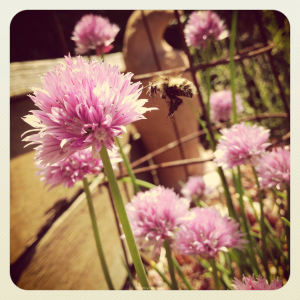On March 9, 2014, I stepped outside, delighted but not surprised to see the crocuses in full bloom. What did surprise me, however, was to see the first bee of the season; surely, was it not too early? I snapped some photos until the ‘bee’ took his leave.
Upon researching a little more about what I had photographed, I learned that bees have long L-shaped antennae and have four wings. These were details that I hadn’t noticed before. If they were striped, landed on a flower but especially with a fuzzy body… The moral of this story is far more reaching – how we look at everything and everyone. Once we engage, ask questions and begin to understand, compassion follows.
The ‘bee’ in these photos turns out to be a bee-fly. With only two wings, the bee-fly has much more control when flying and has more precision when hovering. The bee-fly has huge eyes, which take up his entire head. Similar to bees, the bee-fly feeds on the nectar in flowers and some bee-flies are very important pollinators. There are hundreds of kinds of bee-flies, some look like honey bees, bumble bees, yellow jackets or wasps.
Did you know?
At least 71% of the 150 ‘true flies’ (Diptera) families include flies that feed at flowers as adults. Diptera (Di = two, ptera = wings) have been documented to be primary pollinators for many wild and cultivated plant species. Many people think of flies as a nuisance (although there are many species that are!), few people realize their importance in the life cycle, such as:
- food for valued bird and fish species
- pest control
- as decomposers and soil conditioners
- water quality control indicators
- as pollinators of many plants
Bee-flies seem to be the first to grace our beautiful flowering buds in early spring because they are more tolerant of the cold. So, in light of learning about their value, won’t you join me in looking more closely at these stunning creatures? Let’s encourage all pollinators to visit without being shooed away! 🙂
Finding beauty everywhere.
These photographs were taken with a Nikon D7000, AF-S Micro Nikkor 85mm lens.
